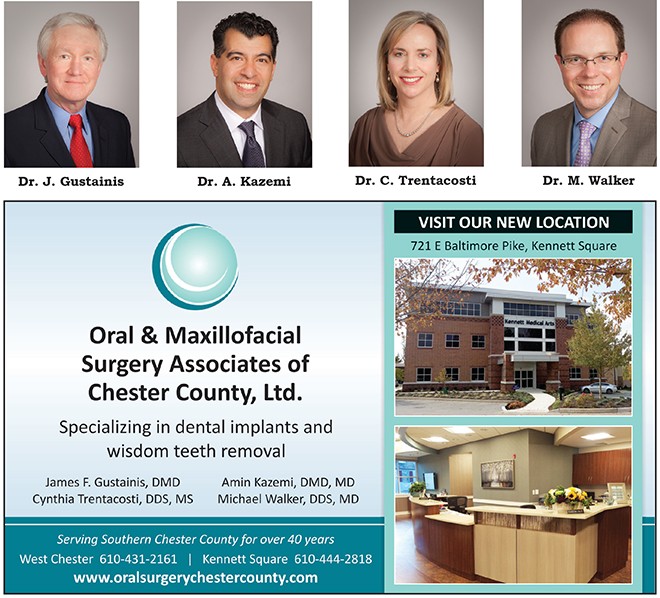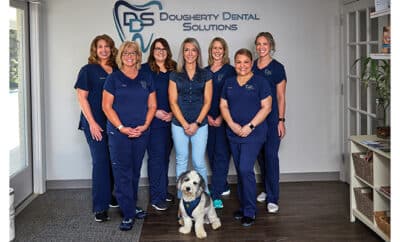Be Smart About Your Child’s Wisdom Teeth
In our quest to achieve and maintain optimum health, we are confronted with decisions regarding our wisdom teeth (third molars). This is often a difficult topic to breach, as this clinical dilemma frequently arises when we are young (late teens) and many times without any symptoms. As human beings have evolved over millennia, our diet has become more refined thus limiting our jaws to grow to their full genetic potential. Lack of space in the back of the jaw to allow for full functional eruption and room to allow for proper hygiene, can expose us to higher risk of infection, decay, gum disease, cyst formation, damage to nearby teeth, and rare tumors.
It is critical for us to team up with our dental team (Dentist, Orthodontist, and Oral Surgeon) to determine if proper space is available. If the proper space is available to allow for full functional eruption with proper position to allow for optimum biting with the opposing tooth, then the team needs to follow the wisdom teeth during the life of the patient to maintain their health and function. If the wisdom teeth lack the proper space to erupt fully, then removal needs to be considered. When considering surgical removal of wisdom teeth, a few topics need to be carefully assessed: timing of removal, risks associated with the removal, risks associated with not removing the teeth, mode of anesthesia, and recovery.
Surgical removal of wisdom teeth (third molars):
1. Timing of removal:
This topic is critical to a successful surgical treatment as outcome studies have proven over and over that when the wisdom teeth are at an early stage of formation their removal is associated with the lowest rate of complications. The clinician needs to carefully assess the amount of root formation, the degree of eruption, and the proper surgical space to remove the teeth with ease. Of further importance is the enhanced healing and recovery potential at a young age. To assess such factors, doctors often rely on a panoramic or a 3 dimensional x-ray and thorough examination. At a more advanced age, clinical and radiographic examinations along with assessment of any symptoms are extremely important.
2. Possible risks associated with removal:
All surgical risk assessments must start with a thorough medical and dental history. As mentioned before, major surgical risks are extremely rare at a young age. However, doctors have to be very in tune with the position of the teeth as they relate to other vital structures nearby (a nerve in the lower jaw, upper jaw sinus, position of the other teeth, jaw joint disease, etc.). If the risks outweigh the benefits of removal then the doctor will suggest observation of the wisdom teeth over time or partial removal of only the top portion of the tooth (coronectomy). However, if it is more beneficial to remove the teeth, detail surgical planning needs to follow.
3. Risks associated with not removing the teeth:
If by allowing the wisdom teeth to remain in a suboptimal position, we are being exposed to significant risks (infection, decay, etc.) then the teeth should be removed. It is very important that we assess the risk of removal vs the risk of allowing the teeth to remain. This is best summarized in a position paper by the American Association of Oral and Maxillofacial Surgeons:
“Predicated on the best evidence-based data, third molar teeth that are associated with disease, or are at high risk of developing disease, should be surgically managed. In the absence of disease or significant risk of disease, active clinical and radiographic surveillance is indicated.”
4. Mode of Anesthesia:
There are many anesthesia options available to allow for safe and comfortable removal of our wisdom teeth. Our choice mainly depends on our own level of comfort or anxiety. The majority of patients prefer some level of sedation to allow for comfortable tolerance of the procedure. Oral and Maxillofacial Surgeons are thoroughly trained in performing many modes of anesthesia and deal with any possible complications associated with the anesthetic.
5. Recovery:
Detailed recovery information is shared with our patients to allow for smooth recovery. Recovery typically includes 2-3 days of rest with limited oral function. During this time our doctor is available to handle any possible complications.
In conclusion, to make a wise decision regarding our wisdom teeth requires a team of professionals that we can trust. A careful assessment of our wisdom teeth along with specific risk evaluation will give us the best chance to address our wisdom teeth appropriately.





